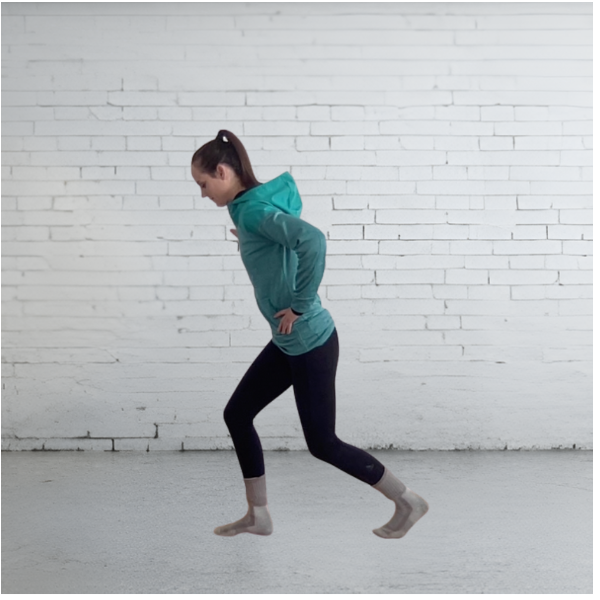
Photo from: https://housecalldoctor.com.au/blog/benefits-of-stretching-your-body/
With seemingly endless options and variations of stretches, it's hard to know what to integrate, why and when. As a physical therapist with over 10 years of experience, the 5 stretches below are tried and true. They are safe, simple and most importantly, effective. Key performance instructions are listed next to a picture of how to complete each stretch.
Many people also ask about timing of stretches: pre or post-hiking. Honestly, the science isn't overwhelmingly compelling to support either, so do whatever feels best to you! For some people this routine is an effective way to begin a warm-up to prepare your body for activity. For others, it is a great way to wind down and part of ending a wonderful day.
As it interests you, pay special attention to the anatomy and the explanation of why there are subtle variations that can make a BIG difference. If you have additional questions, please feel free to reach out!
Straight Knee Calf Stretch (Gastroc)

Back leg is being stretched.
Feet staggered.
Lean forward.
Straighten the back leg as much as possible.
You should feel the stretch in the back of the lower leg.
Hold 30". Switch legs. Repeat 3 times each side.
Bent Knee Calf Stretch (Soleus)

Back leg is being stretched.
Feet staggered.
Lean forward.
Bend the back leg at the knee.
You should feel the stretch in the back of the lower leg, further down towards the Achilles and ankle compared to the straight knee stretch.
Hold 30". Switch legs. Repeat 3 times each side.
Why include both?? The calf complex is made of two different muscle groups, your gastrocnemius and your soleus. Your gastroc crosses the back of your knee. Your soleus does not.

If you are only stretching with a straight knee you are missing the opportunity to selectively stretch your soleus, one of the key muscles used in hiking, walking and running!
Standing Quad Stretch

Start with feet next to each other.
Standing next to a wall for balance if needed (challenge yourself to stand without the wall too!)
Bend your knee to bring your heel up towards your body.
You should feel the stretch in the front of the upper leg*.
Hold 30". Switch legs. Repeat 3 times each side.

*You should NOT feel anything in your low back. If you do, don't pull quite as hard. Make sure you don't have a big arch in your lower back. Looking at the anatomy, can you see how the green muscle (the quadriceps) attaches to the pelvis? If you pull really really hard or the muscle is tight, the pelvis can rotate forward adding compression to the spine in the back causing low back pain.
*You can also try gently squeezing your butt together like you have a walnut between your butt cheeks. This will rotate your pelvis back and should relieve the pressure on your back.
Kneeling Hip Flexor Stretch

Start half kneeling on the floor.
The leg under your body is being stretched.
Gently squeeze your glutes together to rotate your pelvis backwards ("tuck your tail").
You should feel the stretch in the front of the hip or leg that is down under your body.
Hold 30". Switch legs. Repeat 3 times each side

You may know of the lunging variation of this stretch (lunging forward from the pictured position above). If you look at the hip flexor picture below (the hip flexor called the iliopsoas is in green) can you see how this muscle attaches directly to the spine? So, if you lunge forward vs rotate/tuck the pelvis the amount of sheer force or forward pulling directly on the spine increases. If you have experienced low back pain, starting with the tuck version as described above will be more spine-friendly. It may be counter-intuitive, but stretching the FRONT of the hip can actually relieve pain and tension in your BACK.
Static Hamstring Stretch

Lay down flat on the floor.
The leg in the air is being stretched.
Use a stretching strap, scarf, towel, dog leash etc. to hold your leg as straight in the sky as possible. Keep the knee straight without being locked out.
You should feel the stretch in the back of the leg that is up.
Hold 30". Switch legs. Repeat 3 times each side
If you feel pressure in your low back or want an alternative, bend your other leg so your foot is flat on the floor. This will help flatten out and relax the arch in your low back.

You can think of the hamstrings as the "opposite" hip flexors. They attach to the back side of the pelvis and can rotate your pelvis backwards. Ensuring they are appropriately flexible is essential to avoid the "tug-of-war" between the hip flexors on the front of the pelvis and hamstrings on the back. If you look at the picture consider where the hamstring group starts and ends. Can you see how tightness of this muscle group could lead to challenges completing activities like taking a big step up an incline or up onto a rock?
Try these out, let us know what you think and then get out there!
Learn. Prepare. Do.

Comments